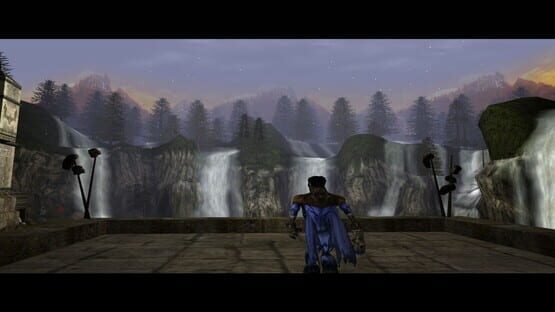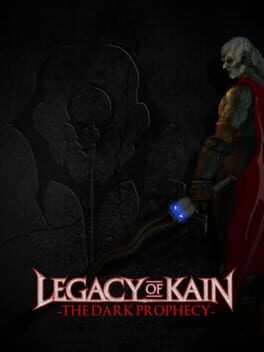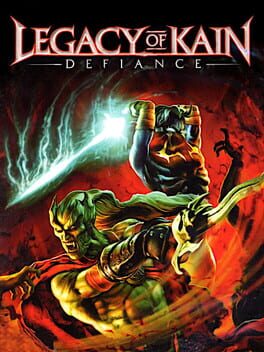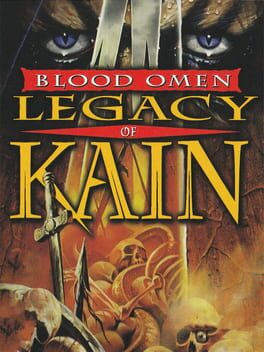

Soul Reaver 2 picks up where Legacy of Kain: Soul Reaver left off, with Raziel having just plunged through the Chronoplast time portal in his relentless pursuit of Kain. Over the course of his quest for revenge, Raziel must unearth the mysteries of Nosgoth’s ancient races, expose the machinations behind the corruption of the Pillars, and the vampire genocide. Throughout the game, Raziel acquires numerous new abilities, weapon enhancements, and spells, all of which are critical to the completion of his epic adventure. Soul Reaver is a third-person combat adventure filled with devious puzzles and kick-ass combat. Fly, swim, jump, and even travel from the material world to the spectral realm to overcome obstacles and conquer your enemies. With over 40 abilities to choose from, no two fights will ever be the same.
Also in series
Reviews View More
I do have a theory of why I think this criticism comes up so much more with this game than its predecessor Legacy of Kain: Soul Reaver, which already is the sequel to a completely different kind of game; as the moment you are done watching the opening cutscene, which shows you the final moments of LoK: SR and start controlling Raziel again, the game lulls you in the belief that this is but an expansion to the previous game.
Even to someone like me, who played the first game using a Dreamcast-controller and has barely ever even held a PlayStation 2-controller, when starting out with the game, controlling Raziel will feel eerily similar to how it was before. A few changes you will probably notice is how you won’t be able to shoot out the Energy Projectile, without aiming it anymore, with the button now reacting with a strong/heavy-attack, when you aren’t. This will be your first clue that Raziel never changed, it was the structure surrounding him that did.
Soul Reaver 2, unlike the 3D-metroidvania that was Soul Reaver (1), is a linear, action focused. This big change to the structure wasn’t done without reason though, as the story basically hits you over the head with how there is no such thing as free will and Raziel basically only doing everyone else’s bidding, even when he tries his best to avoid it.
Most changes can be traced back to that reasoning and I will start with the biggest one being the new and expanded combat system.
Soul Reaver 1 had a combat system, which in the best case, had you on the lookout for any weapons before confronting an enemy, as you wouldn’t have been able to defeat them otherwise. It was a combat system that incentivized the player to explore their environment and search for optional content, so it wouldn’t have fit here if it wasn’t changed and I believe the way they went about it to be really interesting, and it serves as a great example of Crystal Dynamics design-philosophy, when creating this sequel, of trying to not change the systems, but rather the structure around them to achieve something vastly different with them.
All the moves, you know and love from the first game, return, with only stealth and the energy projectiles receiving nerfs, they also expanded on it by allowing you to dodge into an enemy, without attacking, heavy-attacks and a complete overhaul of how the Soul Reaver works.
While I think the first two additions really helped making combat feel more expressive and get even better as you learn how to appropriately combine these two with the mechanics passed on from the first game; I believe the changes to the Soul Reaver to be at best misguided, as they nerfed it heavily, while at the same time trying to convey it being more powerful in the story.
Due to being able to call upon the Reaver at the press of a button at any time now, instead of it appearing at full health, it does not halt the constant draining of Raziels health anymore, which is also made more potent than ever in this game.
This was also not done without reason, as the only way to recover that lost health is to, you guessed it, reaving the souls of any enemies around. This in theory would work as great incentivization to dabble in the expanded combat system, but it was way to overtuned and became a great annoyance; made even worse by the fact that the game already has enough ways of incentivizing the player to defeat enemies, such as trapping you in a closed room with them, something that happens more frequently as the game goes on and towards the end went to such extremes that it tacked on at least another hour of playtime; and giving the weapons you need to quicker deal with enemies to the enemies themselves, which works as a fun little parallel to how the system worked in the prequel.
Just like in Soul Reaver (1), Raziels moveset is expanded upon in this game by visiting dungeons, which on paper is the logical thing to do. The problem is that these dungeon designs were the most hit or miss part for me, ranging from one of the best in the series thus far, to making me imagine Sisyphus as a blessed soul and easily the worst part of the game.
The dungeon design philosophy of Soul Reaver, which I talked about more in my review of that game, was mostly scrapped, probably because you barely have to revisit them, now being more akin to what you would see in a 3D-Zelda game, being built around a central room with branching paths. The puzzles you will find in the so called forges are mostly centered around doing the most obvious things enclosed in one room, located directly next to the central chamber. Most of these will have you just mindlessly interact with the first thing you see and have that be the whole “puzzle.”
When you finally reach the end of a forge the Reaver will absorb its energy and you will be able to use said energy for the puzzles of the next dungeon.
This mechanic, unfortunately, is entirely underbaked as elemental Reavers, to my best understanding, do not/have minimal impact on combat encounters, the thing the whole game is centered around, and their abilities are very similar in usage, being limited to interacting with other panels on the ground, most of whose only discernible trait being the symbol of the kind of Reaver you need to interact with them on it; and being able to shoot different stuff.
I might have made it sound more boring as I should have as the light and air Reaver came into great use in Janos Audron’s Retreat, the best dungeon in the game, and the puzzles centered around having to get somewhere with a different kind of Reaver and their own set of skills were really fun, albeit due to their nature could only ever be present in the later dungeons/forges. The dark Reaver centered puzzles were the worst offender and can be summarized to: ”get zapped by giant eyeball you didn’t see, search for a way to go back to the material realm, go get the dark reaver, shoot the eyeball” and I can’t really talk much about the fire-Reaver, as it was only used once in the whole game, due to the story and gameplay developing somehow asymmetrically.
The puzzles not centered around the Reaver were also a mixed bag and mostly straight up bad. One of these is the way you enter Janos Audron’s Retreat.
Soul Reaver 2 will see you exploring a few select places in Nosgoth during different times, a concept that sounds way better in theory. One of these places is the entrance of Janos Audron’s Retreat, which the first time around will serve as the entrance of the air-forge. If you ever get sent to the spectral realm there, which may happen as the difficulty suddenly spikes around this point in the game, and fall in the lake you will have to slowly be defeated by Sluagh, as there won’t be a way to go back to the material realm down there, which I, unlike in the first game, wouldn’t categorize as a softlock here, because the change of the saving system caused the creation of checkpoints, thus you won’t be sent to the start of the game.
While the checkpoint isn’t far from that point it still caused me to not ever want to change to the spirit realm around there again. So, when I had to revisit this location around 1-2 hours later and the game outright told me to do so to progress, I was understandably cautious and searched around the perimeter for any other solution. This should never have been an issue in the first place and, in my opinion, describes a lot of this games puzzle design.
One advantage you have when developing a sequel is hindsight and the publics reception of your previous work and this game does try to fix a lot of the issues, I had with its predecessor. For one this game does have an in-game-map, which I never used as the entirety of Soul Reaver 2 is taking place on a linear path, which is small enough to be memorized in its entirety.
The most baffling change was their reaction to both the handling of the glyphs and boss fights being that they completely removed them, as I would have loved their take on them, in a game that is able to focus on them more thoroughly due to being, say it with me, an action-adventure and in the case of the glyphs, not being optional anymore and having them actually be part of a combat system that can support them. They would’ve also helped fix the problem of the lack of an ability to break the blocks of enemies.
The camera and drawing distance were my biggest criticism of Soul Reaver and are not a problem anymore, as they have been completely reworked and benefit from the stronger hardware.
This might be the perfect time to mention the great presentation and story accompanying it. This game at points looked like an early Xbox 360 game, rather than early PS2. The Sarafan Stronghold might just be one of the most beautiful places I have visited in any game ever. While not as impressive as SR1, this game is still a technical marvel.
I won’t get into the story here as to avoid spoilers, just know it is the best one of the series yet, which is saying a lot. It does suffer from some pacing issues during the middle, but it does wrap up nicely and, in the process, manages to answer some questions from both previous games.
While I might have sounded overly negative during most of the review, that it stems from a place disappointment with how they went about the changes rather than contempt for the game. And then again, most of that does feed into the story and therefore makes it better; and while I have obviously not done so yet I believe they make this game more replayable, as the linearity makes it more easily digestible. Most of my criticisms were also most noticeable during the part between the dark- and shortly before the air- forge, after which the game gradually became better.
When looking back on it, I doubt Soul Reaver 2 will leave as much of an expression on me as its predecessor did, but that doesn’t change the fact that it is an easy recommendation to anyone eager to see Raziels story unfold, as I have the premonition that this might just be its beginning.
I thought it was a shame that there were basically no boss fights. The fighting itself was also very tricky at times, either enemies spam you to death or you spam them to death but the whole thing never really feels tactical.
The story is also very branching and I don't really know if it made sense :D But as I said presentation is top-notch and also the music was awesome...a short but very atmospheric pleasure.
PS: LOL, I had to use the fire upgrade for exactly ONE puzzle, ONE SINGLE ONE :D and it was about melting ice so it was also extremely obvious^^ So I wonder if a little more content with more interesting puzzles would have been good but at least there weren't those crappy sliding puzzles from the predecessor^^
Mercifully easier to navigate than the first game. Still excellently written and beautifully performed. I could listen to Raziel and Kain shit-talk each other for hours. But more than anything, that ending has me reeling. I wish there had been a camera on my face for the last hour when I realised exactly what was happening. God damn it just hurts even more now that the series is dead.





